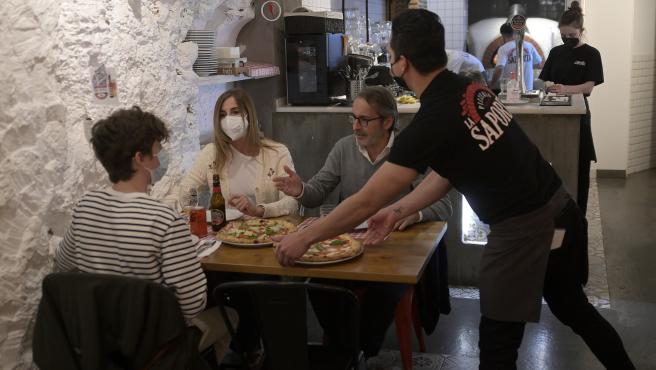The coronavirus pandemic, and the resulting capacity and mobility restrictions, are having multiple impacts on our consumption habits.
One of them, for example, is that the daily menus of Spanish restaurants have lost a third of their customers. This is clear from the report ‘The moments of consumption inside and outside the home’, by AECOC Shopperview, that “evidence that the lunch menu of bars and restaurants is one of the formats most affected by the pandemic”, according to a press release of AECOC, the Association of Manufacturers and Distributors Companies.
Specifically, as they highlight, “the percentage of consumers who choose this option, at least once a week, has gone from 35%, before the health crisis, to 22%, which represents just over a third part of the clientele “.
Obviously, the situation has favored this transfer of consumption from bars and restaurants to homes, mainly linked to the phenomenon of teleworking. Specifically, eight out of ten consumers cook at noon every or almost every day, while 40% spend more on products to cook at home.
The rise of ready meals and food delivery
The AECOC barometer also highlights that consumers are replacing the lunch menu with other options. Thus, “37% of those surveyed affirm that they buy prepared meals from the supermarket for this moment of consumption at least once a week, while 25% order food at home with the same frequency”.
Strong impact of teleworking
The study of the distribution business organization also focuses on the consumption habits of the active population. Of these, today 66% work in person and a third do so in some form of telework, only 12% always work remotely.
Among those who are under some form of teleworking, 76% admit that they spend less on catering than before the pandemic. On the other hand, 54% of teleworkers have increased their spending on products to cook at home and 37% also invest more in delivery.
Specifically, four out of ten teleworkers request delivery at noon at least once a week, and the same proportion buy ready meals.
61% of face-to-face workers carry a lunch container.
Eating at work is no excuse for not maintaining a full diet.Eating at work is no excuse for not maintaining a full diet.Gtresonline
Among the 66% who continue to work in person, 61% affirm that they carry a plastic container for lunch (91% have cooked it at home, 5% have ordered it and 4% buy it in supermarkets).
The percentage of consumers who no longer go out to dinner grows 20 points
On the other hand, with the health crisis, the percentage of consumers who say they never or almost never go out to dinner in bars and restaurants has grown by 20 points and now represents two-thirds of the population.
Regarding consumption at lunchtime on weekends, 56% of those surveyed say that they practically never leave the house to eat on non-working days. Along the same lines, 75% choose to cook at home at this time of consumption, compared to 65% who did so before the pandemic.



 Bitcoin
Bitcoin  Ethereum
Ethereum  Tether
Tether  XRP
XRP  Solana
Solana  USDC
USDC  TRON
TRON  Cardano
Cardano  Lido Staked Ether
Lido Staked Ether  Avalanche
Avalanche  Toncoin
Toncoin